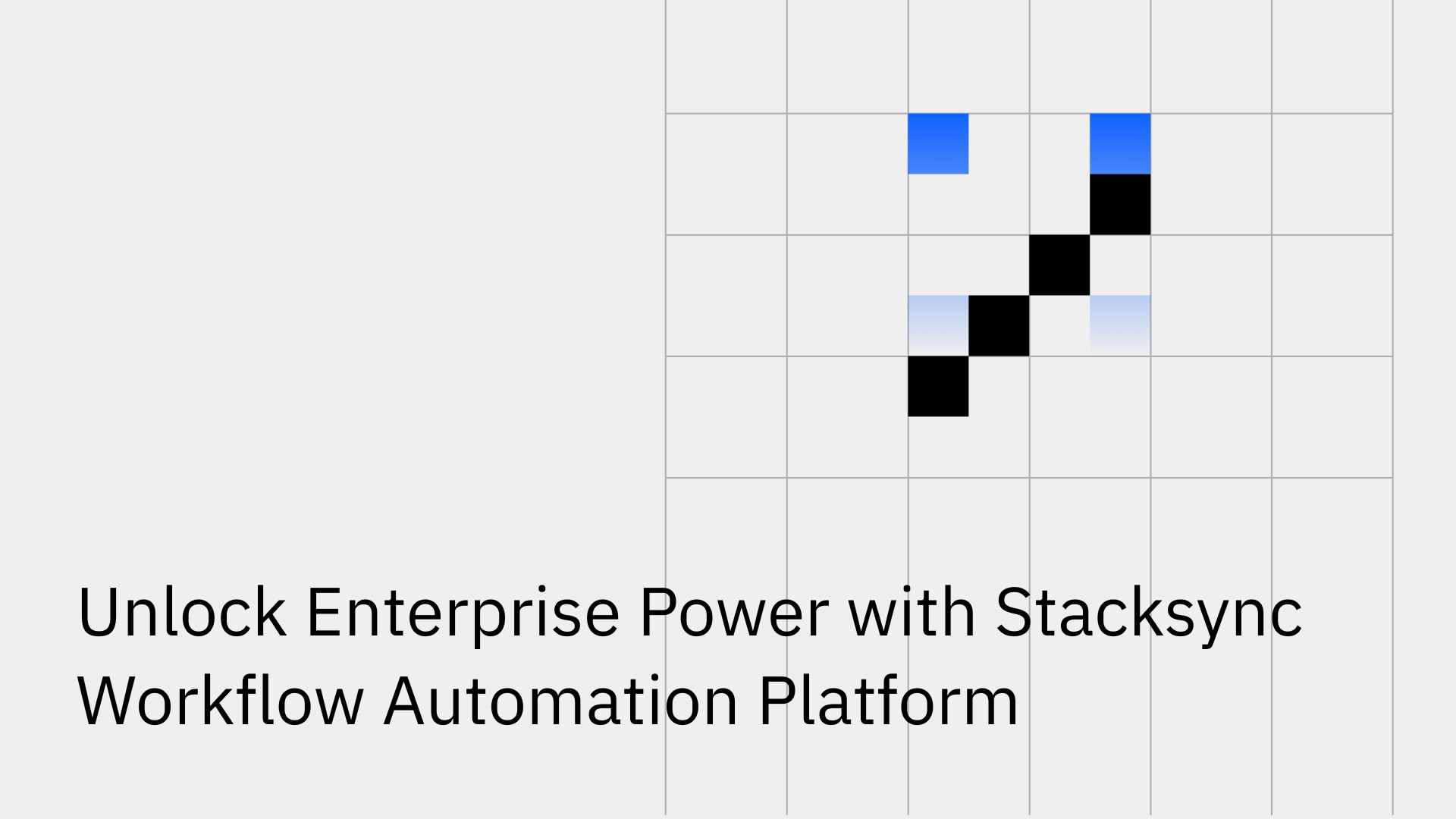
In modern enterprises, operational efficiency is not a goal; it is a prerequisite for survival and growth. Yet, many organizations are constrained by technical debt, data silos, and manual processes that consume valuable resources. Engineering and operational teams spend an inordinate amount of time on repetitive tasks, with some reports indicating that employees waste over two hours per day on work that could be automated. This inefficiency stems from a core technical challenge: a disconnected ecosystem of essential applications like CRMs, ERPs, and databases. The result is data latency, integrity issues, and a significant drag on productivity.
A robust workflow automation platform provides the definitive solution, acting as the central nervous system that connects disparate systems and orchestrates complex business processes. By automating workflows, enterprises can eliminate manual bottlenecks, ensure data consistency, and empower technical teams to focus on innovation rather than maintaining brittle, custom-coded integrations.
The proliferation of specialized SaaS applications has created a powerful but fragmented technology stack. While each system excels at its specific function, the lack of seamless communication between them creates significant operational friction. Attempts to bridge these gaps with custom code or generic Integration Platform as a Service (iPaaS) solutions often introduce new problems:
These technical deficiencies directly impact business outcomes, causing operational delays, revenue leakage, and a compromised ability to compete effectively.
An enterprise workflow automation platform is a centralized software solution designed to connect different systems and automate multi-step business processes across an organization[1]. It moves beyond simple task automation by orchestrating complex sequences of actions, approvals, and data transfers between applications like Salesforce, NetSuite, PostgreSQL, and Snowflake.
A capable platform provides a unified environment for designing, executing, and monitoring these workflows, ensuring that data flows reliably and efficiently between all connected systems.
Implementing a dedicated workflow automation platform delivers quantifiable technical and operational benefits, empowering enterprises to operate with greater speed, accuracy, and intelligence.
While many platforms offer workflow automation, their effectiveness is often limited by a weak data integration foundation. Stacksync is a workflow automation platform engineered to solve this foundational problem first. It provides the real-time, bi-directional data synchronization necessary to power reliable and scalable enterprise workflows.
Stacksync is purpose-built to eliminate the "dirty API plumbing" that consumes engineering resources, allowing organizations to build robust automated processes without the typical complexity and maintenance overhead.
The cornerstone of effective workflow automation is data consistency. Stacksync provides true bi-directional synchronization that propagates changes across systems in near real-time. Unlike platforms that use two fragile one-way syncs, Stacksync’s engine is designed with native conflict resolution and field-level change detection. This ensures that workflows are always triggered based on the most current and accurate data, whether it originates in a CRM, ERP, or database.
With a library of over 200 pre-built, no-code connectors, Stacksync removes the need for custom development. Engineering teams can connect to complex systems like Salesforce, NetSuite, and Snowflake in minutes, not months. The platform automatically handles API authentication, pagination, rate limits, and schema mapping, freeing developers to focus on building competitive advantages rather than managing integration infrastructure.
Enterprise workflows must be resilient. Stacksync is architected for reliability with automated error handling, retry logic, and comprehensive monitoring. It is designed to scale from thousands to millions of records, ensuring that performance remains consistent as your business grows. This built-in resilience means you can trust Stacksync with mission-critical processes without fear of silent failures or unrecoverable data issues.
Stacksync is built to meet stringent enterprise security requirements. With compliance certifications including SOC 2 Type II, GDPR, and HIPAA, the platform provides end-to-end encryption, robust access controls, and secure connectivity options like VPC peering. This ensures that your data remains protected while enabling the critical workflows your business depends on.
Consider the complex quote-to-cash workflow, which typically involves Sales (CRM), Finance (ERP), and Operations (custom database).
The Manual Process (Problem): When a sales representative closes a deal in Salesforce, they must manually notify the finance team. Finance then re-enters the customer and order data into NetSuite to generate an invoice. This process is slow, prone to data entry errors, and creates delays in service provisioning and revenue recognition.
The Stacksync Automated Workflow (Solution):
Closed-Won in Salesforce.Customer and Sales Order in NetSuite, ensuring data fidelity.This entire process is completed in seconds, without manual intervention. The result is an accelerated sales cycle, elimination of data entry errors, complete operational visibility, and a superior customer experience.
Disconnected systems and manual processes are a fundamental barrier to enterprise agility and growth. A workflow automation platform is the key to breaking down these barriers, but its success hinges on the quality of its data integration core.
Stacksync provides the reliable, real-time, and bi-directional data foundation required for truly effective workflow automation. By solving the underlying integration challenge with an expert system, Stacksync empowers technical teams to build robust, scalable, and resilient automated processes that drive measurable business value. It is a solution for enterprises ready to move beyond basic automation and achieve operational excellence.